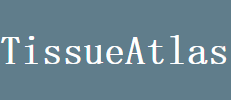Status:
Platform:
Species:
We present a human miRNA tissue atlas by determining the abundance of 1997 miRNAs in 61 tissue biopsies of different organs from two individuals collected post-mortem. One thousand three hundred sixty-four miRNAs were discovered in at least one tissue, 143 were present in each tissue. To define the distribution of miRNAs, we utilized a tissue specificity index (TSI). The majority of miRNAs (82.9%) fell in a middle TSI range i.e. were neither specific for single tissues (TSI > 0.85) nor housekeeping miRNAs (TSI < 0.5). Nonetheless, we observed many different miRNAs and miRNA families that were predominantly expressed in certain tissues. Clustering of miRNA abundances revealed that tissues like several areas of the brain clustered together. Considering -3p and -5p mature forms we observed miR-150 with different tissue specificity. Analysis of additional lung and prostate biopsies indicated that inter-organism variability was significantly lower than inter-organ variability. Tissue-specific differences between the miRNA patterns appeared not to be significantly altered by storage as shown for heart and lung tissue. MiRNAs TSI values of human tissues were significantly (P = 10(-8)) correlated with those of rats; miRNAs that were highly abundant in certain human tissues were likewise abundant in according rat tissues. We implemented a web-based repository enabling scientists to access and browse the data (https://ccb-web.cs.uni-saarland.de/tissueatlas).[1]
Small non-coding RNAs, especially microRNAs, are discussed as promising biomarkers for a substantial number of human pathologies. A broad understanding in which solid tissues, cell types or body fluids a microRNA is expressed helps also to understand and to improve the suitability of miRNAs as non- or minimally-invasive disease markers. We recently reported the Human miRNA Tissue Atlas ( http://www.ccb.uni-saarland.de/tissueatlas ) containing 105 miRNA profiles of 31 organs from 2 corpses. We subsequently added miRNA profiles measured by others and us using the same array technology as for the first version of the Human miRNA Tissue Atlas. The latter profiles stem from 163 solid organs including lung, prostate and gastric tissue, from 253 whole blood samples and 66 fractioned blood cell isolates, from body fluids including 72 serum samples, 278 plasma samples, 29 urine samples, and 16 saliva samples and from different collection and storage conditions. While most miRNAs are ubiquitous abundant in solid tissues and whole blood, we also identified miRNAs that are rather specific for tissues. Our web-based repository now hosting 982 full miRNomes all of which are measured by the same microarray technology. The knowledge of these variant abundances of miRNAs in solid tissues, in whole blood and in other body fluids is essential to judge the value of miRNAs as biomarker.[2]
References
- Distribution of miRNA expression across human tissues.,
, Nucleic Acids Res, 2016 May 5, Volume 44, Issue 8, p.3865-77, (2016)
- Distribution of microRNA biomarker candidates in solid tissues and body fluids.,
, RNA Biol, 2016 Sep 29, p.1-5, (2016)







